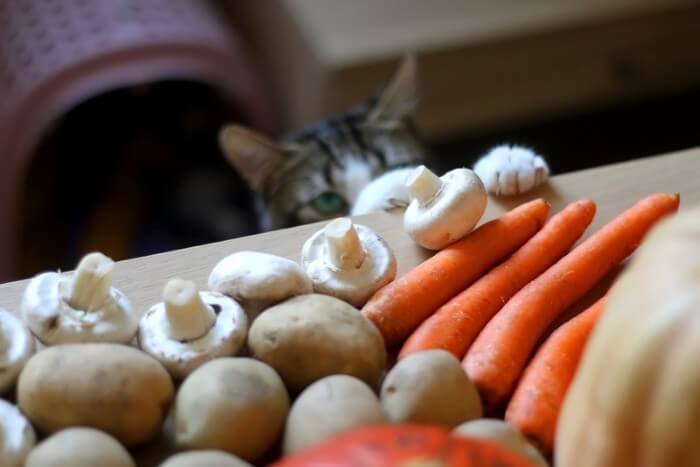The worst part about owning a cat, especially an indoor-only cat, is disposing of their poo.
Cat poo stinks, it’s messy, it’s dirty and it can cause problems if it is not disposed of properly.
Flushing your cat’s stools down the toilet may seem like the logical solution – after all, that’s where all other waste goes.
However, speaking from personal experience, I can confirm that this is a bad idea.
The best way to dispose of your cat’s poo is to get a cat waste composter and deposit your cat’s waste in it, this is a safe and environmentally friendly way of disposing of their waste which will help your garden too!
If you use biodegradable litter you can also put that in there, if you are using a non-biodegradable litter then simply bag and bin it.
This is far better than flushing cat poo down the toilet!
It is difficult to pick up a poo without litter sticking to it (unless they decide to poop on your carpet – but that’s a whole other problem!), over time your cat’s litter collects in the U-bend of your toilet and will sooner or later cause a blockage.
You also shouldn’t flush cat litter for health reasons too.
Cat litter can carry a parasite known as Toxoplasma Gondii, this parasite is very hardy and can survive some wastewater treatment processes (it is rare but it can happen) meaning that it could eventually infect someone with toxoplasmosis.
Toxoplasmosis can be very serious in a pregnant woman as it can kill unborn babies in the womb so it is therefore very important that you properly dispose of cat waste and certainly don’t just dump it.
So whatever you do, don’t flush your cat’s waste down the toilet!
You should also never burn cat litter as this will spread harmful airborne toxins.
So how should you dispose of cat poo?
The best three methods are:
- Bury the poo – a cat waste composter is a great way of doing this.
- Wrap & bin the poo, compost the litter.
- Bag the poo and litter and bin it.
Contents
1. Wrap & Bin The Poo, Compost The Litter.
Advice from the British Environment Agency (they care a lot about disposing of waste correctly and safely) states that cat waste should be ‘wrapped carefully and placed in domestic refuse’.
The wrapping is usually done with newspaper however you can also buy biodegradable bags which are just as environmentally responsible as using paper.
Once you have wrapped the poo you can put it in your domestic bin, ideally your outdoor bin if possible to prevent bad smells from filling your home.
They also advise the use of biodegradable litter which should be composted after the faeces has been removed.
Make sure you do not compost cat poo as it can carry disease which the composting process will not break down sufficiently to kill off.
2. Bury The Poo.
If you have a garden with sufficient space burying your cat’s poo can be a viable waste disposal solution.
First you need to dig a hole roughly one metre deep. Make sure you store the dirt nearby.
Then cover the hole with something that will prevent anyone falling down it and will also keep the bad smell in – something like a concrete flag should do the job.
Alternatively, you can get a purpose-made cat waste composter – these are effectively bins which are dug into the ground, you can open the lid and throw your cats waste down it. They’re a bit tidier than having an open hole in your back garden.

Every time you need to empty your cat’s litter tray simply scoop the poo and chuck it down the hole.
Then either bag and bin the remaining litter or compost it.
After 3-4 months of using your hole, fill it in and dig a new one.
Burying your cats poo is a great way of breaking it down and it will also enrich the soil in your garden over time!
Be aware that this method may not be ideal for homes which have dogs with a strong sense of smell who love to dig.
3. Bag & Bin
If you don’t have access to a garden or a compost heap then composting litter or burying poo is not an option.
Disposing of it in domestic waste if your only real option.
There are things you can do to reduce the environmental impact of your cats waste it is a good idea to invest in a specially made sealed cat poo bin.
When your cat poos simply scoop the waste into the bin.
These sealed bins require only one big bin liner (meaning you aren’t creating a lot of non-biodegradable plastic waste) and can fit weeks worth of cat poo into them.

They are also completely airtight so bad smells won’t be a problem. When the time comes to changes your cat’s litter you can also pour all of the litter into the bin to avoid using additional plastic bags.
Hygiene & Safety Tips:
As we mentioned, cat waste can carry disease especially if your cat is an outdoor cat as they are more likely to have been exposed to potentially infectious waste, so handling it with care is very important.
Here are a few quick and simple hygiene tips to ensure that handling cat waste has no negative impact on your health:
Use Gloves
Using gloves is an essential precaution when handling cat litter as it prevents your skin from coming into contact with any dangerous bacteria which may be present.
Use A Mask
Cat litter creates a lot of dust particles that can easily be inhaled and can cause problems for people who have breathing conditions such as asthma.
There is also concern that some clay litters contain sodium bentonite which can cause lung irritation if inhaled, goggles should also be used to prevent the sodium bentonite from causing any eye irritation.
Clean Up
Wash your poop-a-scoop every time you use it using soap and clean water. This will prevent any bacteria from spreading.
Of course, don’t forget to wash your own hands afterwards!
Remove Waste Everyday
Regularly removing the waste on a daily basis helps to quickly get rid of bad odours and reduce bacterial build up in your litter tray.
Also Read:
As an Amazon Associate I may earn a small fee from qualifying purchases at no extra cost to you. This helps us run the site, so thanks for your support!







Leave a Comment